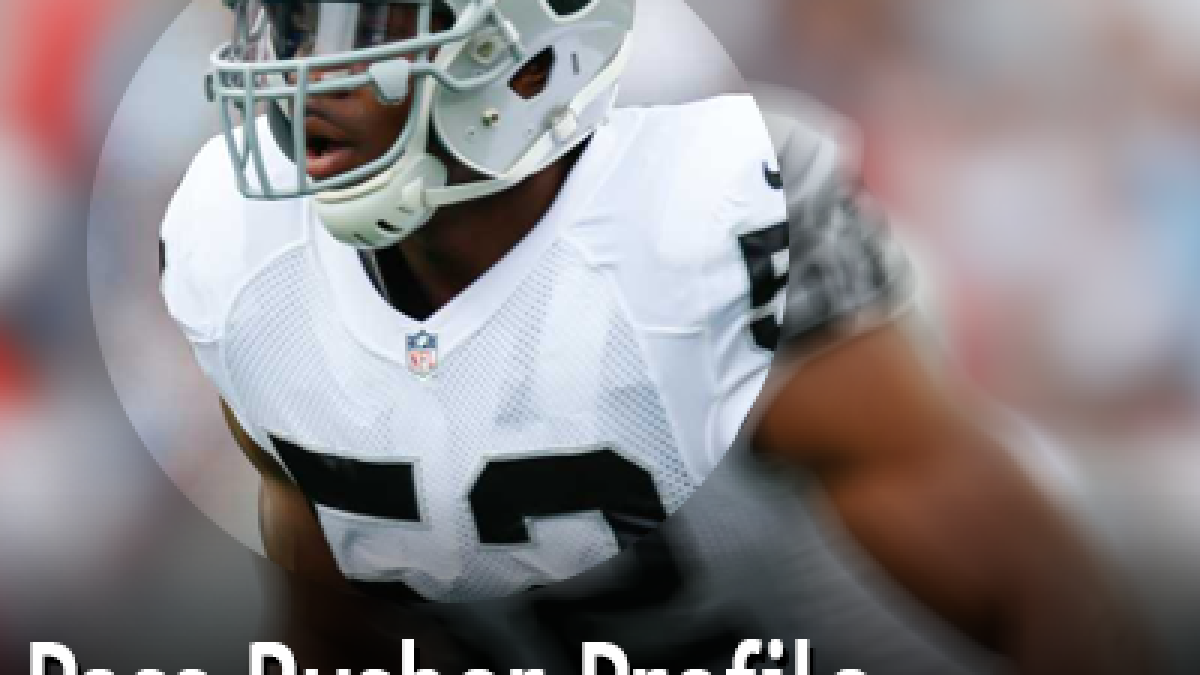 Here at PFF we always strive to add greater detail to how player performance is judged and in our Pass Rusher Profile series we are going to dig into our database to build a more detailed picture of some of the best pass rushers in the NFL.
Here at PFF we always strive to add greater detail to how player performance is judged and in our Pass Rusher Profile series we are going to dig into our database to build a more detailed picture of some of the best pass rushers in the NFL.
How do they win? On what down do they do their best work? Do they take full advantage of deeper drops by opposing quarterbacks? Which edge defenders are more productive with their hand down? All this detail and more is waiting to be dug into and we’ll be taking you on a tour of the best pass rushers in the league.
Khalil Mack
After having picked a series of disappointing players in the first round, it appears that the Oakland Raiders finally got it right by selecting Khalil Mack with the fifth overall pick of the 2014 NFL Draft. He started in all games of the Raiders last season and was even in contention for the Defensive Rookie of the Year award before losing out to Aaron Donald. However, he still earned the 39th position in our Top 101 ranking and finished his rookie year as our second-highest graded 4-3 linebacker behind Von Miller. Although, he was at his best when stopping the run, he also showed promising signs when rushing the passer as he finished second among his peers in that aspect of the game as well.
Mack showed some typical rookie signs in his first season. In his first games he was rather quiet, which may suggest that it took him some time to get up to the NFL’s speed. However, once he got used to playing at the highest level he shined after the team’s bye as he recorded 32 of the 54 combined sacks, hits and hurries in the following seven games. Him being less impressive in four of the team’s final five games may also show that he wasn’t yet prepared for a 16-game season.

As with most edge players coming out of college, there were many questions regarding what position can Mack play best, especially depending on the system that the team plays. The Raiders tried several things with Mack and consequently, despite playing primarily a linebacker, he was rushing the passer nearly as frequently from a 3-point stance as from a 2-point stance. However, he was more efficient from the latter than from the former. He recorded 20 total pressures when putting his hands in the dirt compared to 34 when he stood up before the snap. Whilst his Pass Rushing Productivity score was above the NFL average from a 2-point stance, it was below that from a 3-point stance.
Finishing the play
The facet of the game where Mack is behind his peers and clearly needs to improve is converting his pressures to hits and, mainly, sacks. Whilst the NFL average for converting pressures is 37%, Mack was able to get to the quarterbacks on only 26% of his pressures. When looking at combined pressures and hits, Von Miller had just eight more than the rookie, however, the Texas A&M alum recorded 15 sacks while Mack had only four. This is especially visible at bullrushes where despite the fact that Mack had a combined 13 pressures, he wasn’t able to sack the quarterback once, while Miller finished two of his six pressures with a sack.

Besides converting pressures into hits and sacks, Mack will need to try to play entire games at the same level. His PRP score of 6.6 in the first quarter is considerably below the average as he also failed to record a single sack or hit in the opening quarter of games. On the other hand, three out of his four sacks came in the fourth quarter, one being the last play of the game against San Francisco when the game was essentially over.

As with many linebackers rushing the quarterback, Mack was heavily impacted by whether the protection slid his way or not. Whilst rushing the quarterback more often when the center turned towards him, he recorded fewer combined pressures (14) than when the center turned away from him (26). As a matter of fact, in the latter cases he had more pressures than Miller and his PRP score was not only better than the average but the fourth best among edge rushers who rushed the quarterback at least 400 times.

Although, Mack mostly lined up on the right side, he rushed from the left side 29% of the time. Despite playing less on the left side, he had as many hits from there as from the right side and actually recorded three of his four sacks while rushing the quarterback from the left. While NFL players' PRP scores are slightly better when rushing from the left side, Mack’s figure increased significantly from 7.8 to 13.7 when moved there.
Mack is already one of the better edge players against the run and he has already demonstrated that he can create pressure. What we’d like to see in the following years is to convert that pressure into hits and sacks more frequently. By taking this step he can become as dominant as his AFC West counterpart in Denver.
Follow Ben on Twitter: @PFF_Ben


 © 2025 PFF - all rights reserved.
© 2025 PFF - all rights reserved.